Sigma A 50 mm f/1.4 DG HSM
3. Build quality
In the photo below the tested lens is positioned next to the Sigma A 35 mm f/1.4 HSM and the Canon EF 50 mm f/1.4 USM. You can notice at once that the new lens is much bigger than the older, classic Gauss 50 mm f/1.4 devices. What’s interesting, the Sigma 1.4/50 is also noticeably bigger than the Sigma 1.4/35 which parameters can create more construction problems.
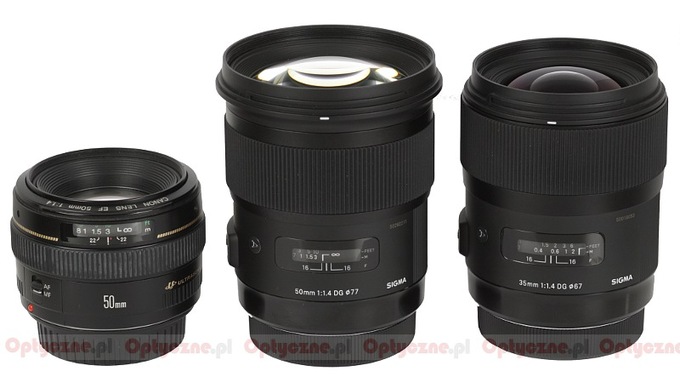 |
Please Support UsIf you enjoy our reviews and articles, and you want us to continue our work please, support our website by donating through PayPal. The funds are going to be used for paying our editorial team, renting servers, and equipping our testing studio; only that way we will be able to continue providing you interesting content for free. |
- - - - - - - - - - - - - - - - - - - - - - - - - - - - - - - - - - - - - - - - - - - - - - - -
The Sigma A 50 mm f/1.4 DG HSM starts with a metal mount which surrounds contacts and a rear element of the lens, 33 mm in diameter. The element is mobile; it is situated on the same level as the mount when you set the focus at infinity and it hides over 1 cm inside the casing when you pass to the minimum focus distance. The area near the lens is matt and darkened nicely, with some ribbing. You can’t see any electronics elements peeping out. The front element is immobile for a change which means the optical system and the focal length shift during the focusing.
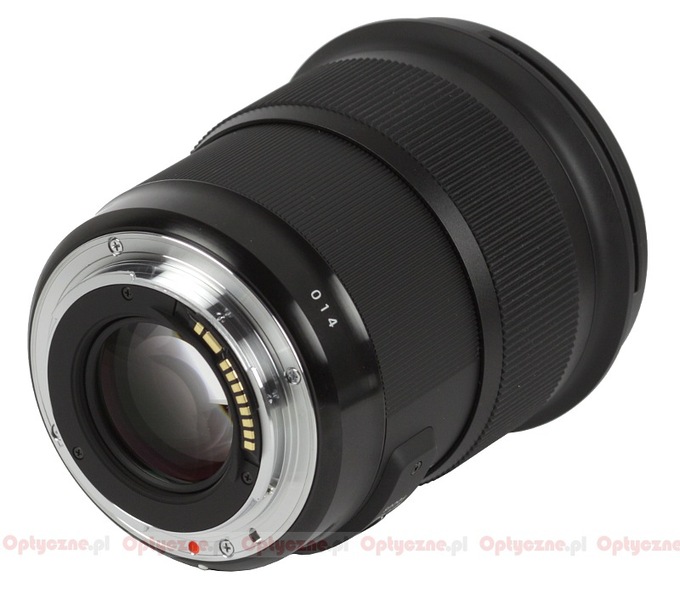 |
The proper casing of the lens starts with a smooth, black, metal ring featuring a white dot which makes the alignment with a camera easier. Further on you see the name and parameters of the lens; above them there is a distance scale behind a window, expressed in feet and meters. Below the scale you get a depth of field scale but marked only by f/16 so not especially useful. On the left side of the scale you find an “A” letter which indicates that the lens is qualified as an “Art” device, an inscription MADE IN JAPAN and a focusing mechanism mode slider (AF/MF).
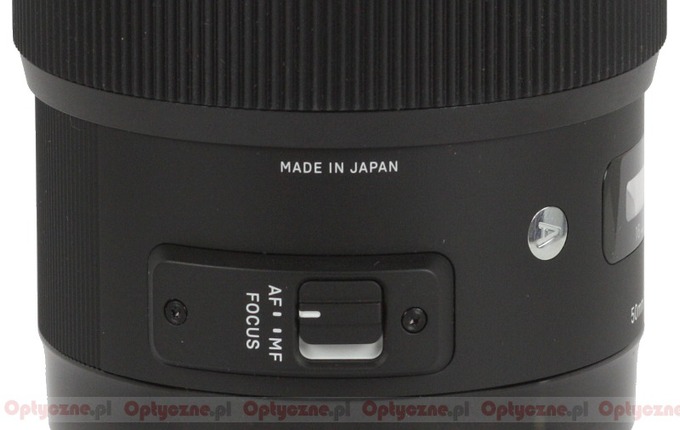 |
The next element is a huge manual focus ring, as wide as 36 mm. Most of its surface is occupied by comfortable rubber ribs. The ring moves smoothly and is well damped but it’s a pity that running through the whole scale takes a turn through just 90 degrees. With such a great aperture fastness a bit higher transmission ratio would be more than welcome as it would allow you more precise settings.
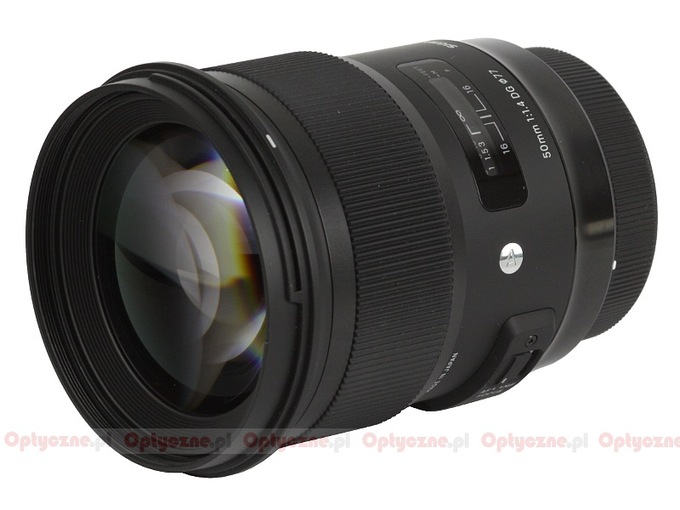 |
Immediately behind the manual focus ring you find a hood thread encircling a non-rotating filter thread, 77 mm in diameter, which in turn surrounds a front element, 60 mm in diameter.
For a 50 mm device the optical construction diagram of this lens is really impressive – we present it in a picture below.
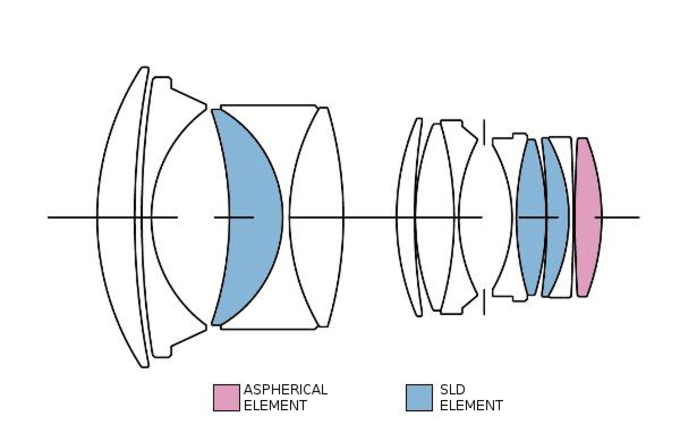 |
You deal here with 13 elements positioned in 8 groups. Three elements are made of low dispersion SLD glass and one is aspherical. Inside you can also find a circular aperture with nine diaphragm blades which can be closed down to f/16.
Buyers get both caps, a hard case and a hood in the box.
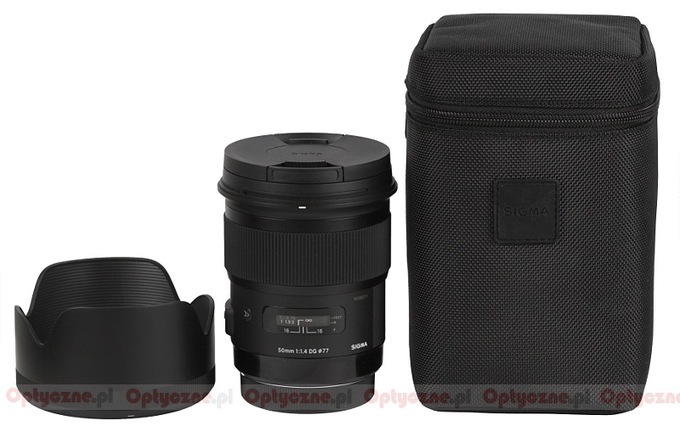 |






